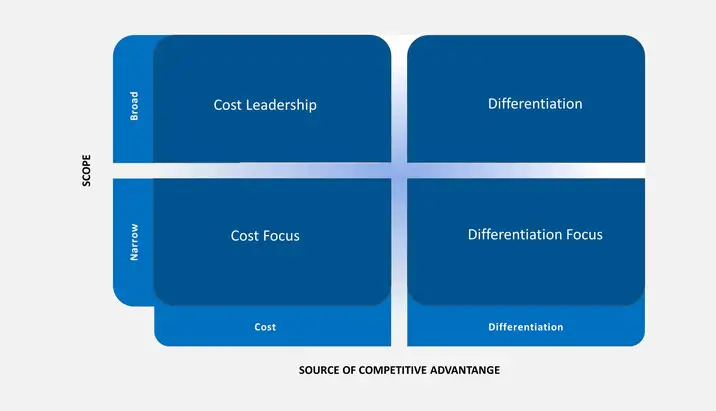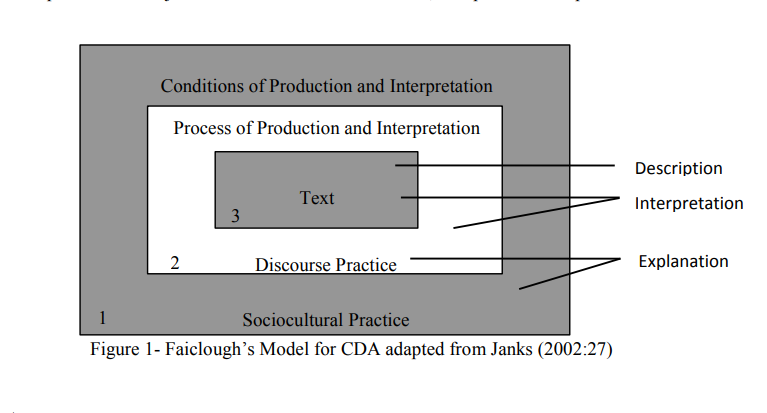Herzberg Theory of Motivation in The Workplace | Two Factor Theory of Motivation
Who is Frederick Irving Hertzberg?
Frederick Irving Hertzberg was an American psychologist who became one of the most influential names in business management. Hertzberg proposed the Motivation Hygiene Theory in 1959 in the book The Motivation to Work. The theory is also known as the two-factor theory of Job Satisfaction.
What is the Two Factor Theory of Motivation?
Herzberg’s two-factor theory is a psychological theory on motivation in the workplace developed by Frederick Herzberg in the 1960s
Herzberg’s Theory is based on an extensive survey of motivational factors at work, and the theory is often used in the context of Maslow’s hierarchy of needs.
The theory breaks down workplace needs into two categories: hygiene factors that determine the basic level of stability and job security and motivation factors that give employees a sense of satisfaction.
Herzberg noted that these motivators’ presence ensured employee satisfaction while job dissatisfaction arose from a lack of hygiene factors. The two-factor theory of motivation holds that job satisfaction and dissatisfaction are two separate categories with entirely different contributing factors.
Herzberg’s motivation-hygiene theory holds that employers must increase employee motivation factors while simultaneously increasing workplace hygiene to ensure harmony in the workplace.
Herzberg Theory of Motivation in The Workplace | Two Factor Theory of Motivation
The two–factor theory /Herzberg’s Theory of motivation states that there are specific workplace factors that cause job satisfaction. Some factors cause dissatisfaction, all of which act independently of each other.
Hertzberg concluded that conditions in the workplace could be divided into two main groups of factors. These are;
- Hygiene factors also sometimes called maintenance factors and
- Motivating factors. ( intrinsic motivators)
Herzberg’s Theory Hygiene Factors
Negative attitude and Dissatisfied: Hygiene factors can only prevent and reduce negative attitudes and dissatisfaction from the employees. The hygiene factors are, therefore, the difference between dissatisfied and not dissatisfied.
When management covers hygiene factors, they do not create satisfaction and, thereby, motivation. They only ensure that the employees are not dissatisfied.
💥🎁 New Year & Easter Deals On Amazon !
Don't miss out on the best discounts and top-rated products available right now!
🛒 Shop Now and Save Big Today!*As an Amazon Associate, I earn from qualifying purchases.
The employees will come to work every day but will not be motivated to make any extra effort in their work.
The employee’s hygiene factors must be covered before moving on to the next level, which is the motivators factors at the top of the model.
Herzberg’s Theory Motivators Factors
Positive Attitude and Satisfied: Motivator factors can create a positive attitude and satisfaction from an individual employee. The motivators factors are, therefore, the difference between not satisfied and satisfied.
When management uses the motivating factors in the right way, they can give the individual employees the feeling that they have accomplished something they have made a difference.
Difference Between Hygiene Factors and Motivator Factors in Herzberg Two Factor Theory
Herzberg Theory Hygiene Factors |
Herzberg Theory Motivator Factors |
| Hygiene factors cannot create motivation. | Motivation factors create positive attitudes towards work. |
| Prevent and reduce dissatisfaction and negative attitudes | Creates employee satisfaction. It requires the presence of motivational factors that are important to the individual employees.
|
| Hygiene factors are characterized as extrinsic components of job design.
|
Motivational factors are intrinsic to the job itself.
|
| It is about the surroundings of the job.
|
It is about the inside of the job, e.g., Growth opportunities.💥🎁 New Year & Easter Deals On Amazon !Don't miss out on the best discounts and top-rated products available right now! 🛒 Shop Now and Save Big Today!*As an Amazon Associate, I earn from qualifying purchases.
|
| Hygiene factors must be met first before motivators factors. | It relies on Hygiene factors to be done first.
|

Herzberg Theory Hygiene Factors and The Motivator Factors Examples
Below are both the hygiene factors and motivating factors examples that Hertzberg identified in his study.
Herzberg Theory Hygiene Factors Examples
It is logical to start with hygiene factors since we cannot use motivating factors before the hygiene factors are met. They include;
Job Security
The organization must provide job security to the employees. It creates great dissatisfaction and negative attitudes if employees are afraid of being dismissed.
Employee Status
The employee’s status within the organization should be recognized and maintained. Management must be aware that an employee who feels demoted in a restructuring of the company is very dissatisfied.
Interpersonal Relations
The relationship of the employees with their peers, superiors, and subordinates should be appropriate and acceptable.
There should be no conflict or humiliation element present.
Personal Life
The personal life of the employees affects the person’s attitude towards work. Management must be aware of this aspect, and the employees should be offered health care plans, benefits for the family members, employee help programs, etcetera.
Salary
The pay or salary structure should be appropriate and reasonable. It must be equal and competitive to those in the same industry in the same job level.
💥🎁 New Year & Easter Deals On Amazon !
Don't miss out on the best discounts and top-rated products available right now!
🛒 Shop Now and Save Big Today!*As an Amazon Associate, I earn from qualifying purchases.
The salary should also correspond to the cost of living; otherwise, it affects the previous factor personal life,
Physical Working Conditions.
The working conditions should be safe, clean, and hygienic. The workplace is equipment should be modern and well maintained.
Supervisors
The supervisors or management must set the company’s direction and how they fit into its overall plan. Otherwise, Theo employees will be uncertain and, therefore, negative.
Company Policies and Administrative Policies.
The company policies should not be too rigid. They should be fair and transparent. They should include flexible working hours, dress code, breaks, vacation, etcetera.
Herzberg Theory Motivators Factors Examples
What are motivators in Herzberg’s theory? The following are the motivators factors identified in the Herzberg’s theory;
Growth Opportunities
There must be growth opportunities in an organization to motivate the employees to perform well. The employee must have the opportunity to develop both professionally and personally in their work.
Advancement Opportunities
Many employees want to make a career at work; therefore, there must be advancement opportunities in the organization.
As a manager, you should be aware of the difference between growth and advancement factors.
Not all employees want to advance toe are higher levels in the company. They prefer growth opportunities, not advancement, opportunities.
Responsibility
The employees must hold themselves responsible for their work. Their managers should give them ownership of the work. They should minimize control but retain accountability.
💥🎁 New Year & Easter Deals On Amazon !
Don't miss out on the best discounts and top-rated products available right now!
🛒 Shop Now and Save Big Today!*As an Amazon Associate, I earn from qualifying purchases.
Meaningfulness of The Work
The work itself should be meaningful, engaging, and challenging for the employees to ensure they perform and are motivated.
Recognition
The employees should be praised and recognized for their managers’ accomplishments or their colleagues in the group.
Recognition is always positive if it is given sincerely by people you respect.
Sense of Achievement.
The employees must have a sense of achievement. The employee must have the opportunity to successfully accomplish a difficult job, typically by effort, courage, or skill.
An artisan finishing a demanding job or a salesperson successfully winning a difficult order, then they will feel that they have achieved something.
Application of Herzberg Theory of Motivation in The Workplace
Here is how managers can apply the Herzberg Theory of Motivation in The Workplace regarding their employees. They need to adopt a two-stage process to motivate people.
Step 1: They need to eliminate any dissatisfaction that they’re experiencing.
Step 2: They need to help employees to achieve satisfaction/Build satisfaction.
Eliminating Dissatisfaction from the Employees.
To get rid of factors that dissatisfied the employees, the following can be done;
- Fix poor and obstructive company policies,
- Provide effective and supportive, and non-intrusive supervision,
- Create and support a culture of respect and dignity for all team members
- Ensure that wages are competitive when compared to similar industries and positions.
- Build job status by providing meaningful work for all positions.
- Provide job security not only by telling them that you will not dismiss people. You must make an effort to keep your employees by retaining and redeployment to other jobs. You have to show that you take job security seriously.
These actions help eliminate job dissatisfaction in the organization, and there’s no point trying to motivate people until these issues are out of the way.
💥🎁 New Year & Easter Deals On Amazon !
Don't miss out on the best discounts and top-rated products available right now!
🛒 Shop Now and Save Big Today!*As an Amazon Associate, I earn from qualifying purchases.
Building Job Satisfaction in the Workforce/Employees.
Turn the attention to building job satisfaction for the employees—things to consider include.
- Providing opportunities for achievement and opportunities to advance in the company through internal promotions.
- Recognizing people’s contributions. You must remember to do this regularly.
- Create work that is rewarding and that matches people’s skills and abilities.
- Give as much responsibility to each team member as possible.
- Offer training and development opportunities so that people can pursue the jobs they want within the company.
Herzberg Theory of Motivation Advantages and Disadvantages /Criticism
- The two-factor theory overlooked situational variables. The theory does not take into account that employees often have individual hygiene and motivational factors. In reality, you’ll need different strokes for different folks. In other words, different people will perceive different issues and will be motivated by different things.
- Hertzberg assumed a correlation between satisfaction and productivity, but Herzberg’s research emphasizes satisfaction and ignores productivity.
- No comprehensive measure of satisfaction was used. An employee may find his job acceptable even though he may hate part of his job. You love your job as a manager, but you hate to dismiss people.
- The theory was developed by looking only at white-collar workers. Today, the theory is applied to white-collar workers as well as blue-collar workers. Everybody assumes that the two groups have identical motivator factors and hygiene factors.
- Even though Hertzberg’s theory in some respects lacks reliability, it is today a very accepted theory. It provides a quick understanding of hygiene factors and motivators factors, and the theory has proven to be a useful tool in the everyday work of management.

